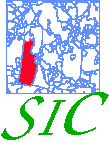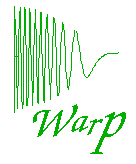This website is best viewed with the firefox browser.

This website is best viewed with the firefox browser.

The storage and transmission of digital images requires large amounts of data. For instance, a typical uncompressed METEOSAT image consists of approximately 18 megabytes of data. Since it produces an image every 30 minutes, a single satellite generates about 860 megabytes each day. Medical scanners, which are increasingly used in diagnosis, produce a large set of digital images for each examination: in the case of a magnetic resonance (MR) scanner, typically 128 images are recorded, corresponding to a total of 8 megabytes of data.
The aim of data compression techniques is to reduce the amount of data needed to accurately represent an image, such that this image can be economically transmitted or archived. Recent research has focused on image coding using image dependant base functions. Two techniques have been developed:
 Segmented Image
Coding (SIC)
Segmented Image
Coding (SIC)The visually extremely important image contours are always well retained by this technique, which guarantees a reasonable image quality, even at very low bit rates. In contrast to some conventional compression techniques, region oriented techniques are very well suited for progressive image transmission: in the reconstruction phase, the image is gradually built up. This is important in, e.g., database applications, where the gradual image build-up allows the user to quickly decide whether or not the transmitted image is the correct one required.
Our research concerning region oriented coding concentrates on the representation of the image texture as a weighted sum of orthogonal base functions. Such orthogonal polynomials necessarily depend on the shape of the region on which they are orthogonal and therefore must be generated for every single region. The generation of these base functions and the representation of the image texture requires a very large number of computations. We have developed a collection of algorithms to reduce the complexity of these tasks.
 Warped polynomial Image Coding (WIC)
Warped polynomial Image Coding (WIC)The image consisting of the coefficients of the base functions in the orthonormal expansion resembled a subsampled version of the original image. Therefore, the WIC image coding method can be interpreted as a form of adaptive subsampling.